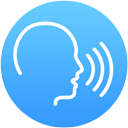







During your practical driving test, you will most likely be asked to perform a safety check. The steps you will be asked to perform may vary, so you should therefore learn all the steps in a "full safety check" (exterior, engine and interior safety check).
If you want, you may bring a checklist to the test. The checklist may contain the order in which the safety check is to be carried out. However, the checklist must not contain any information on how to perform the safety checks.
You may learn a different method of performing the safety check at your traffic school. Use the method you are most comfortable with.
However you choose to perform the safety check, you should practice on a car before taking the test. Do not just memorize all the steps in the security check, try to learn the purpose of them as well. The examiner will notice if you do something without really understanding why.
 Before taking the test you should practice performing the safety check on a car
Before taking the test you should practice performing the safety check on a car
1. Turn on the parking lights and check that they are working both at the front and rear. While doing this, check the reflectors and that both registration plates are illuminated. Also clean any headlight lenses that are dirty.
2. Get in the driver's seat, engage the neutral gear and turn on the ignition. Turn on the left indicator, dipped headlights and fog lights.
3. Get out of the car and check the left side of the car. Inspect the tyres and their tread depth, front and rear indicators, and front and rear lights.
4. Turn on the full beam headlights and right indicator.
5. Check the right side of the car. Inspect the tyres and their tread depth, front and rear indicators, and front and rear lights.
6. Get in the driver's seat again and turn off all lights. Push on the brake pedal and ask the examiner (or someone else) to check the brake lights.
7. Engage the reverse gear and ask the examiner (or someone else) to check the reversing lights.
 During the exterior safety check you should check the lights, headlight lenses, reflectors and the tyres and their tread depth
During the exterior safety check you should check the lights, headlight lenses, reflectors and the tyres and their tread depth
Begin by unlocking the car hood. Usually, you do this by pulling a lever inside the car, next to the driver's seat. The lever usually has a picture of a car with an open hood on it. Read the vehicle's instruction manual if you cannot find the unlocking mechanism.
To open the hood all the way, you need to lift the hood a little and push the safety latch under the hood. Then point out the oil dipstick, as well as the brake fluid, washer fluid, engine oil and coolant fluid reservoirs. Also point out the fuses and make sure the battery is secured firmly.
The location and appearance of these objects varies between different car models and engines. If possible, you should practice the safety check on the type of car you are going to use when taking the test.
 You must know which fluids the different containers contain
You must know which fluids the different containers contain
Usually, you do not have to check the fluid levels, but if you are asked to do so you must know how. Most commonly, you are asked to check the brake fluid level (it should be at the max mark).
1. Get in the driver's seat, adjust the head restraint and backrest and fasten the seat belt.
2. Check and adjust all mirrors. In the rear-view mirror you should see as much as possible of the rear window. In the side mirrors you should only see a little bit of the vehicle's sides.
3. Check the horn and front and rear window defrosters. Also check the windshield wipers and wash the screen if it is necessary.
4. Check the brake system by pushing hard on the brake pedal for 20 seconds while the car is stationary. The pedal should stop about halfway down and offer firm resistance.
5. Check the brake servo and power steering by pushing the brake pedal repeatedly and then starting the engine with the brake pedal pushed down and the steering wheel slightly turned. As you start the engine, the brake pedal should move downward slightly and turning the steering wheel all the way in both directions should become easy.
6. Check the parking brake by starting the car, engaging the parking brake and first gear and then releasing the clutch slowly. The car should not move forward.
 Finish the safety check by checking the parking brake
Finish the safety check by checking the parking brake